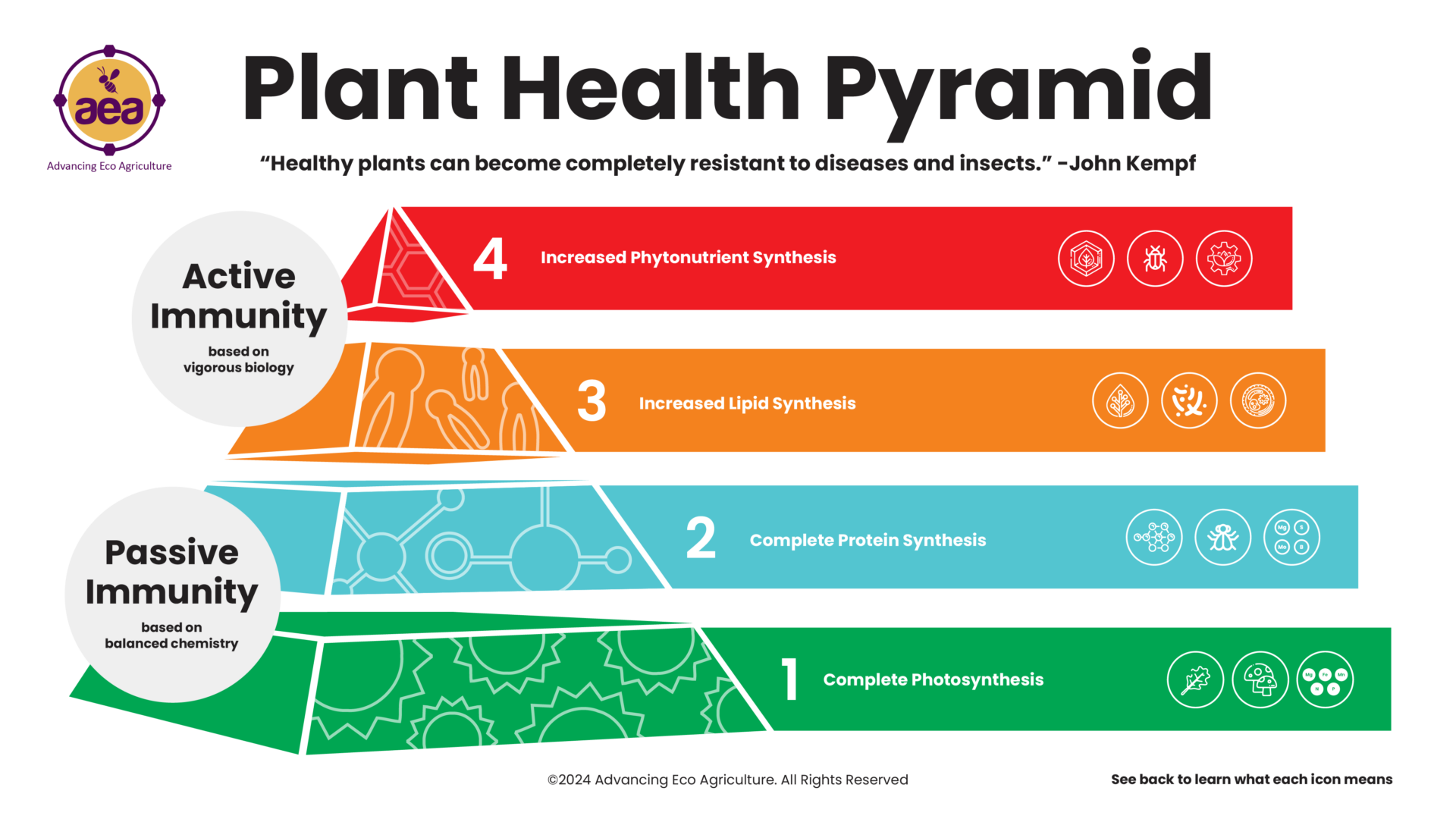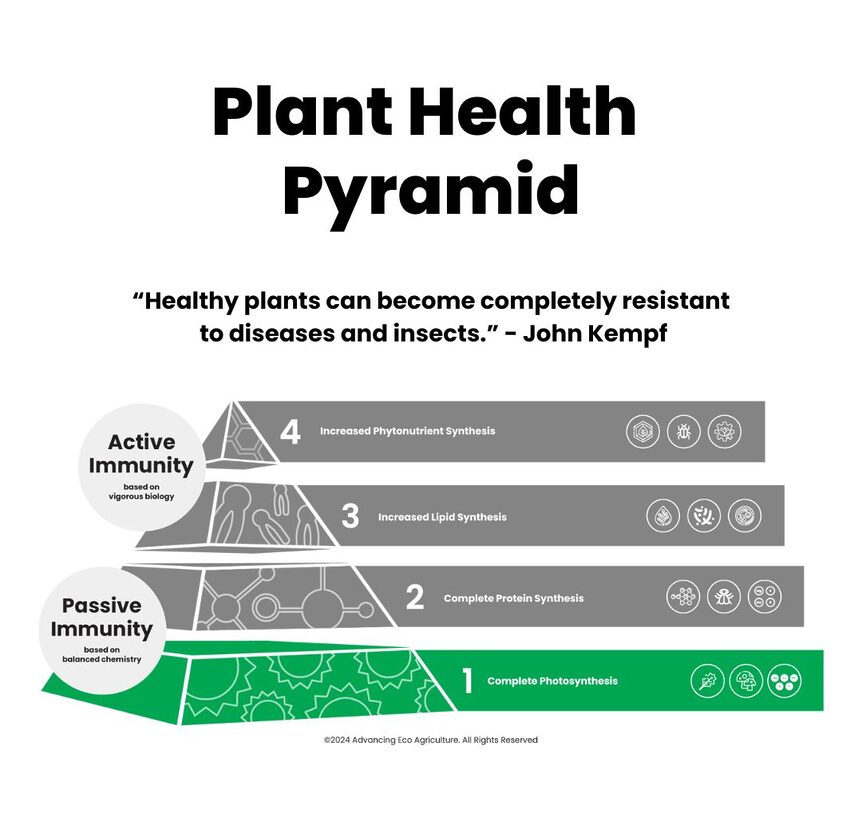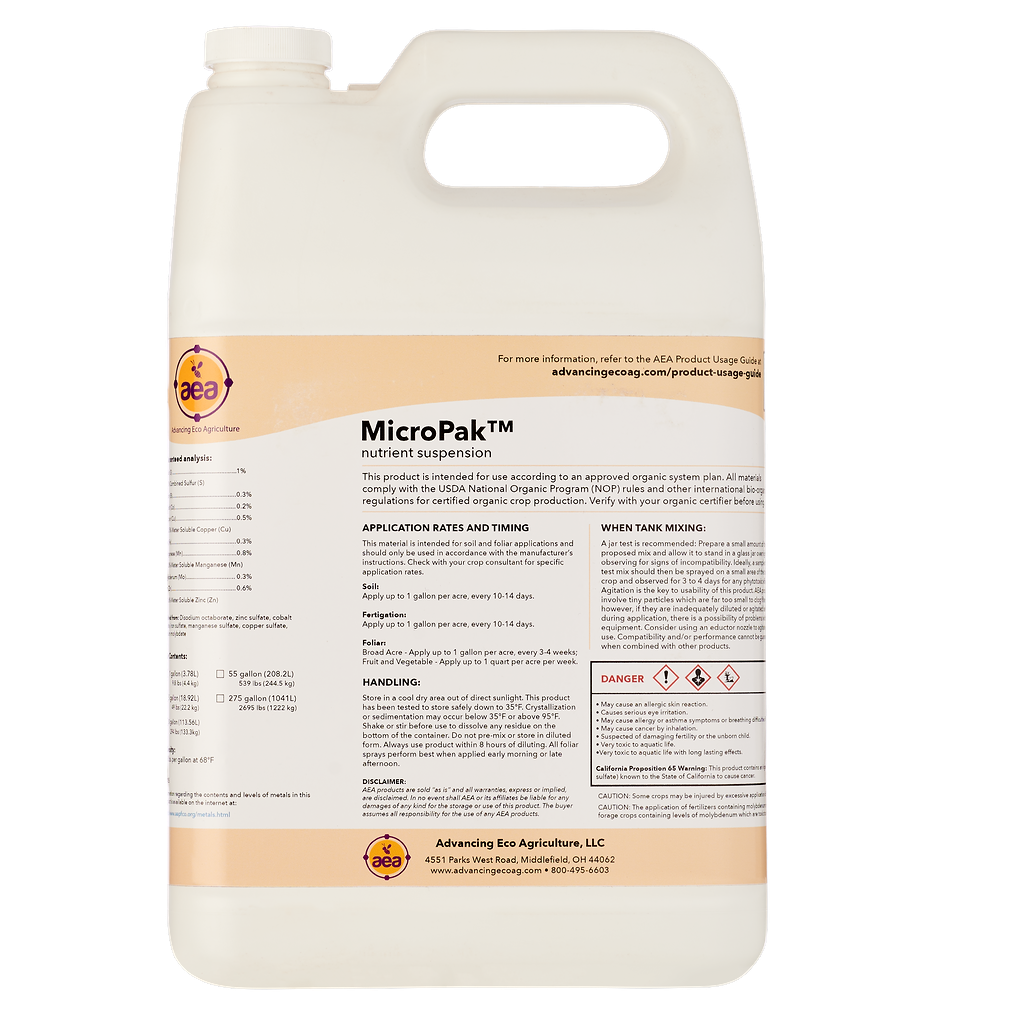The first of our 5 core concepts at AEA is that healthy plants can resist pests and disease. We have seen it happen time and again in the field when plants have properly balanced nutrition. But complete immunity doesn’t just happen: plants become resistant to pests and diseases in stages, as their health improves.
To describe this process, John Kempf created the Plant Health Pyramid, which breaks down a plant’s journey to complete immunity into four levels. Each level corresponds to a distinct physiological process that occurs within the plant; each level produces immunity to a new group of pests or diseases; and there are distinct, actionable steps a grower can take to advance their plants to each level.
- In Level 1, plants achieve complete photosynthesis.
- In Level 2, they synthesize complete proteins.
- Level 3 involves increased lipid synthesis.
- And in level 4, plants produce elevated levels of plant secondary metabolites.
Without further ado, let’s dive into Level 1.

Subscribe to our blog.
You'll get each post to your inbox (~1x/week).
You may unsubscribe at any time. We value your personal information. Here's our Privacy Policy.
"*" indicates required fields
Level 1: Complete Photosynthesis
Complete photosynthesis has 2 components: quantity and quality.
Quantity
Plants that can photosynthesize completely are able to increase the total volume of sugars that they produce in a 24-hour period, sometimes by as much as 3-4x. This can be measured in a laboratory, but in the field, you can get a rough idea by reading brix on a refractometer. It is not unusual to see a plant’s brix reading increase from around 3-5 to around 12-15 or even higher when it is photosynthesizing properly.
Quality
In addition to producing more sugars, plants at Level 1 also produce higher quality sugars. These plants have very low levels of simple, non-reducing sugars; each simple sugar molecule, like glucose or fructose, is quickly changed into a complex carbohydrate.
“What we have come to accept as “normal“ is plants which are photosynthesizing at only 25% of their inherent genetic capacity” – John Kempf
Disease resistance

- verticillium
- fusarium
- rhizoctonia
- pythium
- phytophthora (ok, all you sticklers out there: this isn’t actually a fungus)
The mechanism for a plant’s resistance has to do with the quality of the plant’s carbohydrate profile–the ratio of reducing to non-reducing sugars–and thus the quality of the root exudates it feeds to the soil microbes. This determines the microbial profile in the rhizosphere, and whether the soils become disease-suppressive or disease-enhancing.
Required Minerals

- Magnesium
- Nitrogen
- Iron
- Manganese
- Phosphorus
Magnesium and Nitrogen are critical components of the chlorophyll molecule itself. Iron is needed to assemble chlorophyll. And Manganese is required for water hydrolysis–the splitting of H20 into H and OH–which is the very first step in photosynthesis.
Phosphorus isn’t directly involved in photosynthesis, but it is the essential element in ATP, which is needed in large quantities to metabolize the bounty of sugars that are created through high-functioning photosynthesis.
So, if plants have adequate levels of the 5 elements Mg, Fe, Mn, N, and P, they can reach Level 1 of plant health. As a grower, you don’t necessarily need to add these elements, you just need to make sure your plants have enough. At AEA we have found that iron and manganese almost always need to be added–these two elements oxidize very easily, so even when they’re amply present in soils, they tend not to be available to plants.
Certain AEA products can supply these 5 needed elements: MacroPak and MicroPak make a great combination: MicroPak supplies Fe and Mn, and MacroPak has N, P, and Mg. Our Planter Solution supplies all 5: Mg, Mn, P and Fe, N.
The First Step
Attaining Level 1 of plant health is critical–everything that happens in levels 2, 3, and 4 has the prerequisite of complete photosynthesis. It should be noted that Level 1 is not the baseline–reaching it is quite an achievement in itself. John Kempf has observed most agricultural crops to be at the equivalent of a Level 0 or even -1.





